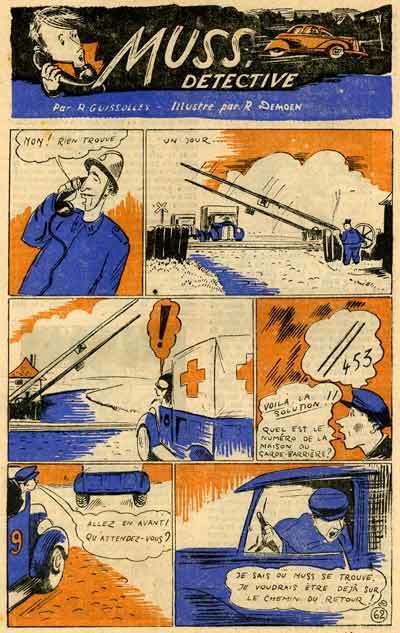Name Renaat Demoen | Died 1982 | |
 | ||
Renaat Demoen (11 June 1914 – 1982) was a Belgian illustrator and comics creator.
Biography
Renaat Demoen worked for a number of publishers, including Lannoo, when he met Nonkel Fons, editor-in-chief of the youth publications of Averbode, in 1942. Demoen soon becomes one of the main illustrators for the magazines, and lives at the medieval gate house of the Averbode Abbey until his marriage in 1968, when he moves to the village of Averbode.
Demoen was a self-taught illustrator and layouter. When the magazine Zonneland reappeared after the second World War, he redesigned the magazine, provided most of the illustrations, and created a comic for the front page. He created 15 comics between 1945 and 1959, but only a few of those were published in book format at the time. His main work are the illustrations for Zonneland and Petits Belges until the early 1970s, and a few hundred covers for the Vlaamse Filmpjes. Furthermore, he illustrated more than 400 books, mainly destined for the youth. Most of these were published by Averbode as well, but also for Opdebeeck and other Flemish publishers. Two of these books were written by Demoen.
As a comics creator, his early works, from 1945 to 1950, are remarkable due to their experiments with page lay-outs and coloring, and their strong stories. Spits de Durver was one of the few Flemish comics about the war, and described the adventures of a boy whose father was deported to Germany. Following stories were mainly based around the figures of Johnny and Annie, but were less realistic and more escapist. A final masterpiece was De Zwarte Veroveraar (The Black Conqueror), with a story by John Flanders, about the life of Pierre-Jean De Smet. He was one of the main early comics authors in Flanders, together with Marc Sleen, Willy Vandersteen and Bob de Moor, but due to his shorter career and limited audience, he has become largely forgotten.
He also created the images for the Druivelaar, a daily calendar which was very popular in Flanders. As of 2007, his images are still used here.
For his own pleasure, he also painted, both landscapes and brutally coloured scenes with gnomes.
